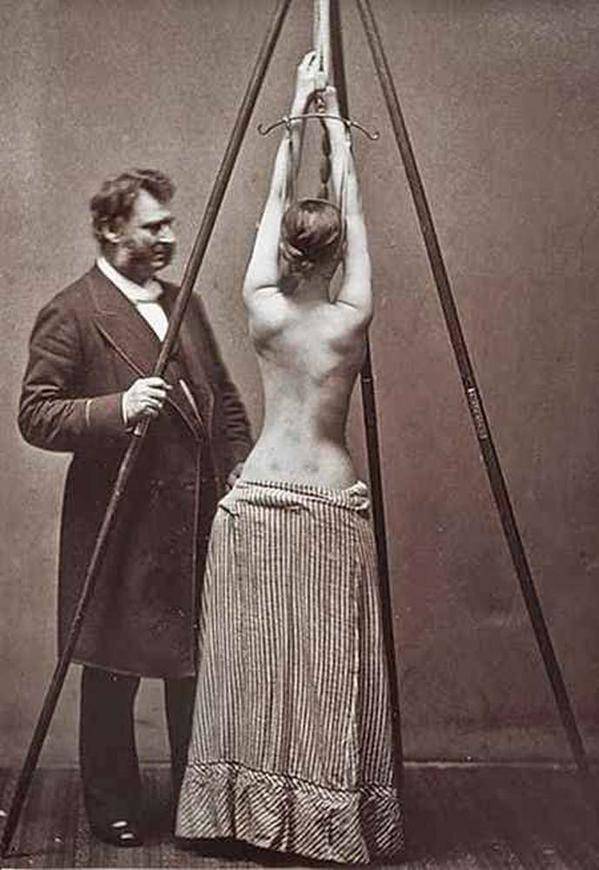Spine Straightening

Internet Archive Book Images Early contraption for spinal correction. 1897.
Most early treatments for spinal deformities involved racks and braces that would probably not look out of place today in a torture chamber or the dingy dungeons of avid BDSM fanatics. Imagine patients bound and suspended by hand, hip, and head to medieval-looking, wooden-framed contraptions designed to pull and twist their bodies.
As harrowing as they may seem, these spine-straightening mechanisms may have been of some value to those suffering from conditions like scoliosis. At the very least, they helped to grow our understanding of the most effective methods for treating complex spinal disorders.
Hippocrates described scoliosis back in 400 BC, and since then all manner of spine-tweaking tackle has been invented (most of which likely failed). In 1895, Lewis Sayre — regarded as one of the founding fathers of orthopedic surgery — suggested treating scoliosis with suspension.
According to Sayre, patients should be hung from their arms until they are dangling almost entirely off the ground, at which point their scoliotic deformities could be straightened out and a plaster of Paris cast applied to hold it all in place.

NYU ArchivesSurgeon Lewis Albert Sayre observes the change in the curvature of a patient’s spine as she self-suspends herself prior to being wrapped in a plaster of Paris bandage as a treatment for a spinal deformity. Circa 1870s.
The technique was questionable, but it did serve to help develop modern methods of body casting and bracing (plus it produced some pretty kinky-looking pictures).





